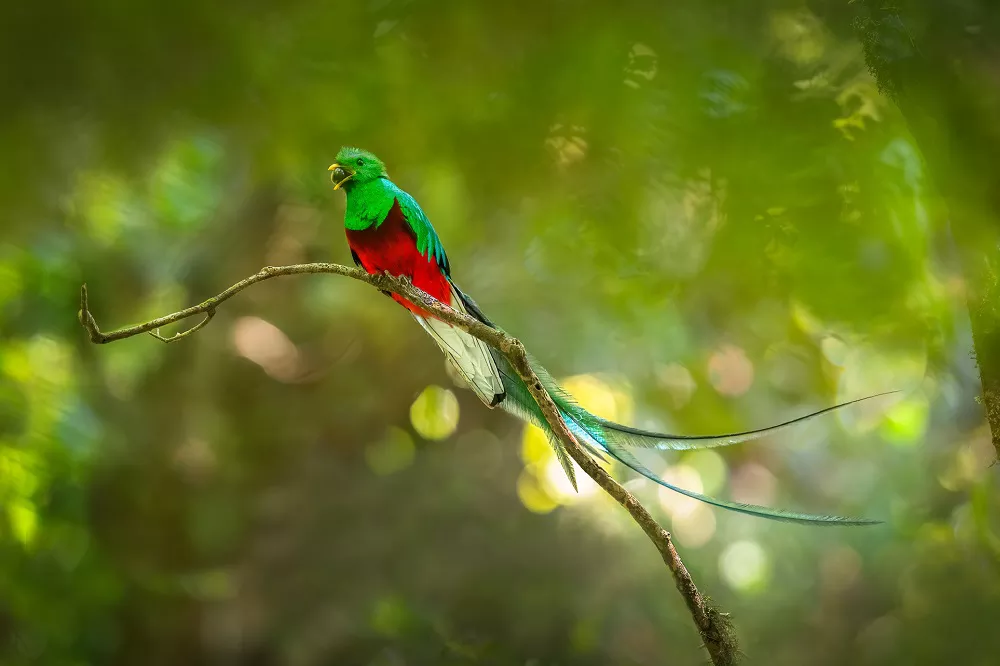The resplendent quetzal is a beautiful bird that inhabits the cloud forests of Central America. This stunning bird is known for its iridescent green feathers and long tail feathers, which can reach up to three feet in length. The resplendent quetzal is considered a symbol of freedom and beauty by many cultures in Central America.
One of the most fascinating aspects of this bird is its diet. Resplendent quetzals are frugivorous, meaning they primarily eat fruit. However, they also consume insects, small lizards, and amphibians. In this article, we will explore in detail what resplendent quetzals eat and how their diet impacts their behavior and habitat.
Fruit
Fruit makes up the majority of a resplendent quetzal’s diet. They prefer ripe fruit with high sugar content, such as figs, avocados, and papayas. However, they also eat other types of fruit, including berries and small fruits like guavas and passion fruit. Because of their reliance on fruit, resplendent quetzals play an important role in seed dispersal in the cloud forest ecosystem. When they eat fruit, they often swallow the seeds whole and then disperse them through their droppings, helping to spread plant species throughout the forest.
Insects
While fruit is the primary food source for resplendent quetzals, they also consume insects. They mainly eat insects that are found on or near fruit trees, such as ants, beetles, and caterpillars. Insects provide an important source of protein for these birds and help supplement their diet when fruit is scarce.
Small lizards and amphibians
Resplendent quetzals are not strictly herbivores; they also eat small lizards and amphibians. These prey items make up a relatively small portion of their diet but are still important for their overall nutrition. They mainly prey on small lizards like anoles and geckos, as well as amphibians like frogs and toads.
Impact of diet on behavior
The resplendent quetzal’s diet has a significant impact on its behavior. Because they rely so heavily on fruit, resplendent quetzals are often found in areas with high fruit availability, such as cloud forests and tropical rainforests. During the fruiting season, these birds will congregate around fruit trees and compete for access to the ripest fruit.
In addition to impacting their behavior, the resplendent quetzal’s diet also affects their habitat. The cloud forest ecosystem is particularly well-suited for frugivorous birds like the resplendent quetzal, as it provides an abundance of fruit trees and other food sources. However, deforestation and habitat loss are major threats to the survival of these birds, as they require a healthy forest ecosystem to survive.
Conservation efforts
Because of their beauty and cultural significance, the resplendent quetzal is a popular target for birdwatchers and ecotourists. However, these activities can also have a negative impact on the birds, as they can disrupt their feeding and breeding behaviors. As a result, many conservation organizations are working to protect the resplendent quetzal and its habitat.
One such organization is the Resplendent Quetzal Conservation Project, which works to promote the conservation of this iconic bird through research, education, and community outreach. The project also works with local communities to develop sustainable tourism practices that benefit both the birds and the people who live in the region.
Conclusion
In summary, the resplendent quetzal is a beautiful and fascinating bird with a primarily frugivorous diet. Their reliance on fruit makes them an important seed disperser in the cloud forest ecosystem and their diet impacts both their behavior and habitat. As such, conservation efforts are critical to protecting these birds and ensuring that they continue to thrive in the wild. By working together to promote sustainable tourism practices and protect their habitat, we can help ensure a bright future for the resplendent quetzal.
Related topics:
- Guatemala’s National Bird: Resplendent Quetzal
- What is a Resplendent Quetzal?
- What does a Resplendent Quetzal look like?


 Facebook
Facebook  Instagram
Instagram  Youtube
Youtube 